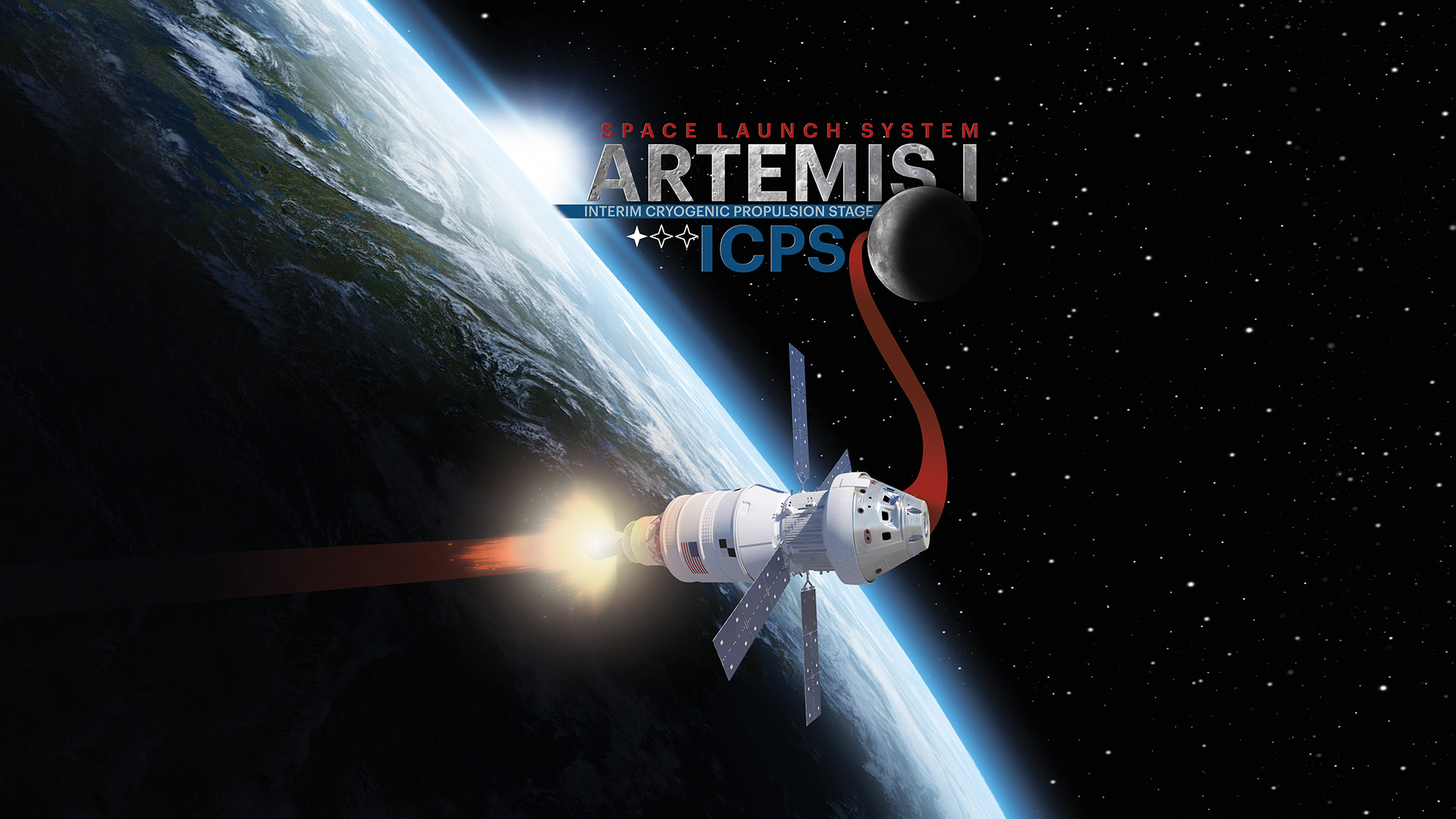Teams of United Launch Alliance (ULA) engineers and specialists will be stationed in Cape Canaveral and Denver to support the countdown and flight of the Interim Cryogenic Propulsion Stage (ICPS) on the inaugural launch of NASA's Space Launch System (SLS) rocket.
ICPS has been provided by ULA to serve as the upper stage of the first SLS missions. For Artemis I, the stage will deliver the Trans-Lunar Injection (TLI) burn to propel the uncrewed Orion spacecraft out of Earth orbit for its journey to the Moon.
ICPS was selected to support the Artemis missions due to its proven heritage of support developed from the Delta Cryogenic Second Stage (DCSS), which was historically flown on the Delta IV rocket.
Throughout the 45-hour countdown and on the day of launch, NASA personnel from the Exploration Ground Systems (EGS) group based at the Kennedy Space Center will operate the SLS rocket and ICPS from Firing Room 1 at the Complex 39 Launch Control Center (LCC).
ULA will monitor the performance of ICPS systems via telemetry, video and voice communications routed to the Delta Operations Center (DOC) at Cape Canaveral Space Force Station, Florida, which serves as launch control for East Coast Delta IV rocket missions. The DOC will house company leadership, launch team personnel and engineering experts on ICPS structures, propulsion, thermal, software and avionics systems. The ULA team will provide their expertise to the NASA launch countdown team on any anomaly discussions associated with ICPS.
At ULA's Denver headquarters in Colorado, design center engineers will also be on console in the Denver Operations Support Center (DOSC) to lend additional expertise to the ULA team supporting in the DOC. Additionally, the highly trained Ascent Team will be on duty in the Vehicle Ascent and Launch Operations Room (VALOR) to supply real-time in flight analysis and information about the ICPS burns and trajectory to NASA's Flight Operations team located at the Mission Control Center in Houston, Texas.
VALOR has supported the first two Atlas V launches of Boeing's CST-100 Starliner spacecraft under NASA's Commercial Crew Program. The engineers will perform the same functions during ICPS launches to assess all critical systems, like engine health, fuel tank pressurization and the vehicle navigation to offer situational awareness of any off-nominal launch vehicle data in the telemetry stream and report flight rule violations to NASA flight controllers, if they occur.
Back at Cape Canaveral, ULA team members will report to the DOC at L-18 hours 30 minutes prior to Artemis I launch to observe the final pre-launch power up of the ICPS. The filling of cryogenic propellants into the stage begins at L-5 hours 20 minutes to load approximately 22,000 gallons of liquid hydrogen and liquid oxygen.
The DOC team will be led by ULA Chief Launch Conductor Doug Lebo, who has been on console for more than 200 Atlas and Delta launches.
In the Mission Director's Center at the DOC, ULA Launch Director Tom Heter III is responsible for assessing the company's readiness for the start of ICPS fueling and later declaring ULA's "go" for launch. Those readiness statements will be relayed to the NASA LCC where John Casani, the IPCS program manager for ULA, will pass them to NASA’s Mission Management Team.
ICPS was manufactured at ULA's rocket factory in Decatur, Alabama, under a subcontract with Boeing. The stage is a modified version of the five-meter-diameter DCSS that has flown 24 times on Delta IV missions since 2004 with 100 percent mission success.
Measuring 45 feet (13.7 meters) tall and 16.7 feet (5.1 meters) in diameter, the ICPS is a single-engine system that provides propulsion in space after the SLS solid rocket boosters and core stage are jettisoned. It weighs 72,197 pounds (32,748 kg) once fully fueled.
The ICPS features a liquid hydrogen tank that is 18 inches longer than the Delta IV second stage to provide the performance needed for the TLI burn. Other DCSS modifications include electrical and mechanical interfaces specific to attaching and supporting the SLS launch vehicle and Orion spacecraft, and a second hydrazine bottle for additional attitude control propellant.
The stage feeds liquid hydrogen and liquid oxygen to the Aerojet Rocketdyne RL10B-2 main engine to produce 24,750 pounds (110.1 kilo-Newtons) of highly efficient thrust.
ULA built three ICPS stages in support of the first three Artemis missions to the Moon. ICPS-2 for the Artemis II crewed mission has completed production and was delivered to Cape Canaveral last summer. Currently, ICPS-3 is being finalized in the factory for shipment to the launch site later this year.

 Back To Blog List
Back To Blog List



